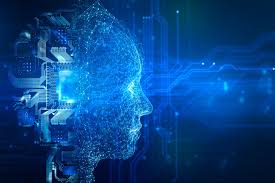The Fascinating World of 3D Technology
Three-dimensional (3D) technology has revolutionized various industries, from entertainment and healthcare to manufacturing and education. The ability to create lifelike, immersive experiences has captivated audiences worldwide.
In the realm of entertainment, 3D technology has brought movies, video games, and virtual reality experiences to a whole new level. Viewers can now feel like they are part of the action, thanks to realistic visuals that pop out of the screen.
Moreover, 3D printing has transformed the manufacturing industry by enabling the creation of intricate prototypes and customized products with precision and efficiency. From aerospace components to medical implants, 3D printing has opened up a world of possibilities.
In healthcare, 3D imaging technology allows medical professionals to visualize complex anatomical structures in ways never before possible. Surgeons can now practice intricate procedures using 3D-printed models, leading to improved patient outcomes.
Education is another field that has benefited greatly from 3D technology. Students can explore virtual simulations and interactive models that make learning engaging and interactive. Concepts that were once abstract can now be visualized in three dimensions.
As we look to the future, the potential applications of 3D technology are limitless. From architecture and design to gaming and beyond, the impact of 3D technology will continue to shape our world in profound ways.
Understanding 3D Technology: Common Questions and Answers
- What is 3D technology in education?
- What is 3D technology in healthcare?
- What is 3D technology examples?
- How does 3D technology work?
- What is a 3D technology?
- What is the 3D technology?
What is 3D technology in education?
3D technology in education refers to the use of three-dimensional visuals and simulations to enhance the learning experience for students. By incorporating 3D models, animations, and virtual reality tools into the curriculum, educators can create immersive and interactive lessons that cater to different learning styles. This innovative approach allows students to explore complex concepts in a more engaging and hands-on manner, making abstract ideas more tangible and easier to understand. 3D technology in education has the potential to revolutionize traditional teaching methods by providing a dynamic learning environment that sparks curiosity and enhances retention of knowledge.
What is 3D technology in healthcare?
3D technology in healthcare refers to the use of advanced imaging techniques and 3D printing to enhance medical diagnostics, treatment planning, and patient care. By creating detailed three-dimensional models of anatomical structures, such as organs, bones, and tissues, healthcare professionals can gain a deeper understanding of complex medical conditions. Surgeons can utilize 3D technology to practice procedures on accurate patient-specific models before performing surgeries, leading to improved precision and outcomes. Additionally, 3D technology enables the customization of medical implants and prosthetics for a better fit and functionality. Overall, 3D technology in healthcare is revolutionizing the way medical professionals approach diagnosis, treatment, and patient care.
What is 3D technology examples?
3D technology encompasses a wide range of examples across various industries. In entertainment, 3D movies like “Avatar” and “Gravity” have captivated audiences with their immersive visual experiences. Video games such as “Fortnite” and “Minecraft” utilize 3D graphics to create realistic virtual worlds for players to explore. In the field of healthcare, 3D printing is used to create customized prosthetics, dental implants, and surgical models for precise medical interventions. Additionally, architectural firms use 3D modeling software to design buildings and structures with intricate details and realistic renderings. These examples demonstrate the versatility and transformative power of 3D technology in shaping our modern world.
How does 3D technology work?
3D technology works by creating the illusion of depth and dimension on a flat surface, such as a screen or print. This is achieved through a process called stereoscopy, where two slightly different images are presented to each eye, mimicking the way our eyes perceive depth in the real world. In movies and video games, 3D glasses are used to separate these images and create the perception of depth. Additionally, in 3D printing, layers of material are deposited on top of each other to build up a three-dimensional object based on a digital model. Overall, 3D technology relies on clever techniques to trick our brains into perceiving depth and dimension where there is none, resulting in immersive and realistic experiences across various industries.
What is a 3D technology?
Three-dimensional (3D) technology refers to the use of techniques and tools that create visual or physical representations of objects in three dimensions, adding depth and realism to the viewing experience. In essence, 3D technology allows for the perception of depth in an image or object, making it appear more lifelike and immersive. This technology is commonly used in various industries such as entertainment, manufacturing, healthcare, and education to enhance visualizations, simulations, and product designs. By leveraging 3D technology, users can explore and interact with digital or physical environments that closely mimic real-world settings, offering a new level of engagement and realism.
What is the 3D technology?
3D technology refers to the use of three-dimensional techniques to create immersive visual experiences that simulate depth and realism. Unlike traditional two-dimensional images or videos, 3D technology adds an extra dimension, making objects appear more lifelike and interactive. This innovative technology is commonly used in entertainment, manufacturing, healthcare, and education to enhance user engagement and provide a more realistic representation of the physical world. By incorporating depth perception and spatial relationships, 3D technology has revolutionized various industries and continues to push the boundaries of creativity and innovation.
Tags: 3d technology, animations, curriculum, education, immersive, interactive, lessons, models, simulations, students, virtual reality tools, visuals
